by Barry Rudolph

Originally Published Online At PSW
|
Hits At The 127th NYC AES Show
by Barry Rudolph 
Originally Published Online At PSW |
|
 The dampening effect of our economic times was noticeable at the just-concluded Audio Engineering Society or AES Show at the Jacob Javits Convention Center in New York City. Even though it was a smaller show with less companies showing in downsized booths, enthusiasm and confidence coming from the big crowd was as strong as ever. Everyone said they were doing great business so go figure.
The dampening effect of our economic times was noticeable at the just-concluded Audio Engineering Society or AES Show at the Jacob Javits Convention Center in New York City. Even though it was a smaller show with less companies showing in downsized booths, enthusiasm and confidence coming from the big crowd was as strong as ever. Everyone said they were doing great business so go figure.
Plug-ins, Plug-ins and More Plug-ins
Judging by the many fascinating and powerful new plug-ins offered, no software plug-in developers were out of work. Not only is the new crop of plugs more powerful, they seem to all be part of a new wave of super-beautiful GUIs that are wonderful to look and also display more information in new useful and meaningful ways.
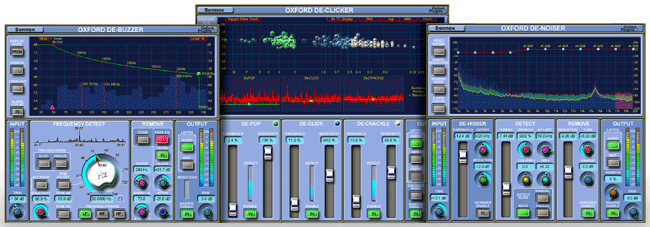
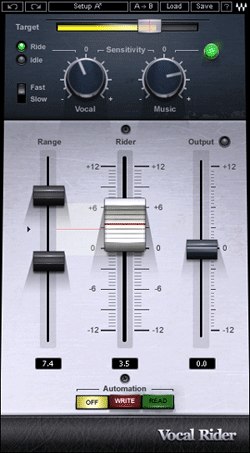
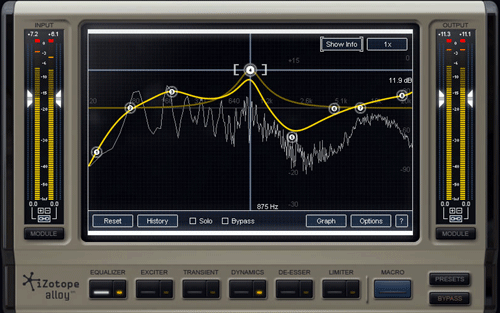 iZotope's Alloy™ is a single plug-in with six essential mixing processors arranged in a signal chain. Alloy is the mixer's version of their mastering plug-in Ozone and it has a great selection of over 150 starting point presets for processing any track within your mix. Each preset has a custom macro layout showing the most salient controls for the task at hand. Advanced users can build their own layouts and move modules around in the signal chain to customize the processing. For both recording, mixing and post-production duty, Alloy includes six modules: Equalizer, Exciter, Transient, Dynamics, De-Esser, Exciter, and Limiter.
iZotope's Alloy™ is a single plug-in with six essential mixing processors arranged in a signal chain. Alloy is the mixer's version of their mastering plug-in Ozone and it has a great selection of over 150 starting point presets for processing any track within your mix. Each preset has a custom macro layout showing the most salient controls for the task at hand. Advanced users can build their own layouts and move modules around in the signal chain to customize the processing. For both recording, mixing and post-production duty, Alloy includes six modules: Equalizer, Exciter, Transient, Dynamics, De-Esser, Exciter, and Limiter.

JoeCo BlackBox
The JoeCo BlackBox recorder answers a big wish amongst a lot of live sound engineers--a simple, none computer-based system to record multi-channel live music. It's a one-rackspace unit that records 24-tracks of audio up to 96kHz sample rates to connected USB2 hard drives. This is a 'dirt-simple' box that locks to timecode and has -10dB/+4dB switchable DB25 I/O connectors on the back, and a 24-channel level meter on the front.
A common 500GB drive will hold 20 hours of 24-track 96kHz audio in Broadcast .WAV file format and you can link additional BlackBoxes for as many tracks as you need. The individual tracks are automatically labeled for editing and mixing later and are accessible for playback or recording from the front panel without any computer interface required.
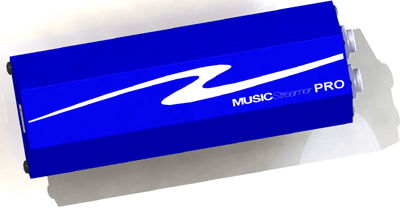
Music Streamer Pro
Also in the simple and easy category is the USB playback unit from High Resolution Technologies called Music Streamer Pro. This cigar-sized unit has a USB 2.0 jack at one end and two mini-XLR output jacks at the other. It's powered from the USB port and, as soon as you plug it in, you'll be streaming out up to 24-bit 96kHz audio out the balanced outputs. The unit self-installs and fully supports both adaptive and asynchronous transfer modes for jitter performance that exceeds conventionally connected bi-phase converters. More at www.hirestech.com.
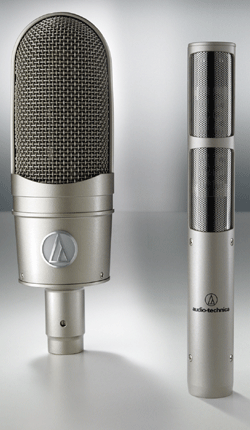 Audio-Technica AT4080 & AT4081 Ribbon Mics
Audio-Technica AT4080 & AT4081 Ribbon Mics
Audio-Technica had two new ribbon mics at the show. Both the AT4080 and AT4081 Bidirectional Active ribbon microphones utilize a hand-built, proprietary design. Since they are phantom powered, there is not the usual worry with other ribbon mics about zapping them or the requirement of any special mic pre-amp or input impedance.
The AT4080 looks like an old-time ribbon mic with a rounded top and is recommended for vocals, horns, strings, acoustic instruments, drum overheads, orchestras, ensembles and guitar cabinets. The AT4081 has a futuristic 'wand' look that you might think is a pencil condenser. It is recommended for strings, saxophones, horns, acoustic instruments, drum overheads, orchestras, ensembles and guitar cabinets. Both of these mics are very glamorous looking and for studio and live sound. Check www.audio-technica.com.

Shure KSM 313 and KSM 353 Ribbon Mics
Shure's recent acquisition of Crowley Tripp microphones is great news for ribbon mic fanciers--like me. These two mics are exactly like the originals and both feature the magical Roswellite™ ribbon material. Roswellite is a super-elastic conductive and magnetic composite with shape memory and low inertia--you can wad it up like a chewing gum wrapper and it will instantly reform into its originally manufactured shape. It impervious to wind blasts and phantom power jolts yet is lithe enough to be used as a microphone diaphragm. The KSM 313 is dual-voiced--each side has a different sound while the KSM 353 is the Cadillac model--a stainless steel tube with a large, double-shielded output transformer. It's especially good for studio and concert hall recording. Both mics are hand built and come in wooden boxes. www.shure.com.
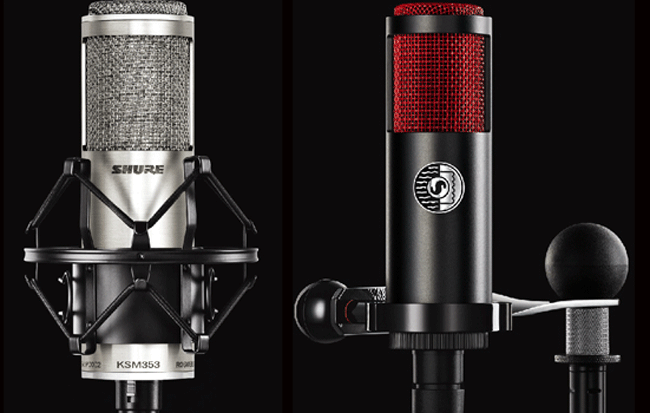
Tascam HS-P82
The Tascam HS-P82 is an 8-Track field recorder for music, television and film production. There are eight high-quality microphone preamps with XLR inputs to record up to 96kHz/24-bit audio with timecode on dual Compact Flash cards that support mirroring & cascade modes.
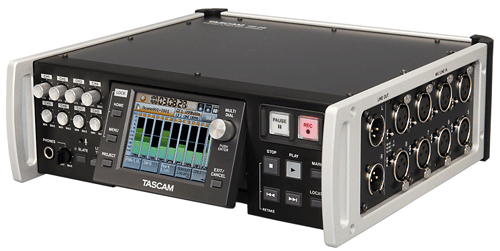 A stereo mix can be recorded in addition to the eight individual channels (10 tracks total) on this recorder housed in an aluminum chassis and with a TFT color touch screen. Other features are: long battery life through low power usage, 4-track recording at 192kHz/24-bit, Broadcast WAV (BWF) support with iXML metadata, power options include AA batteries (x10), NP type, AC adaptor, external DC input and optional V-mount adaptor for ENDURA batteries, up to 5-second pre-record buffer, internal microphone for slate recording, limiter and low cut filter per track, auto or manual cue points, alert signal to headphone output, retake function, and panel lockout. More at: www.tascam.com.
A stereo mix can be recorded in addition to the eight individual channels (10 tracks total) on this recorder housed in an aluminum chassis and with a TFT color touch screen. Other features are: long battery life through low power usage, 4-track recording at 192kHz/24-bit, Broadcast WAV (BWF) support with iXML metadata, power options include AA batteries (x10), NP type, AC adaptor, external DC input and optional V-mount adaptor for ENDURA batteries, up to 5-second pre-record buffer, internal microphone for slate recording, limiter and low cut filter per track, auto or manual cue points, alert signal to headphone output, retake function, and panel lockout. More at: www.tascam.com.
 Tube-Tech RM 2
Tube-Tech RM 2
Tube-Tech has built the RM 2, a two-channel (and more affordable) version of their eight-channel RM 8 rack that'll hold two modules (instead of the RM 8's eight) like the CM 1A (a module version of the CL 1B opto-compressor), the PM 1A mic pre-amp, or the EM 1A equalizer. Since all these processors are tube-based, the RM 2's power supply and internal voltage rails are specifically built offering much higher supply voltages than the 500 series racks can offer. This is a great way to get into the sound of Tube-Tech--the CL 1B is my favorite vocal compressor of all time. Much more at www.tube-tech.com.
Glyph GT 062E Raid
Based on the original GT 062 raid drive with its multiple drive modes selectable with the Glyph Manager software utility, the GT 062E adds an eSATA port for blazing fast performance. The Firewire standard is being depreciated because it is too slow for modern DAW systems--you'll start to see the newer computers and peripherals without it soon. The GT 062E uses the next generation Oxford 936 chip, and hits over 200MB/s sustained throughput over eSATA in RAID 0 mode. That kind of speed is perfect for DAW mega track/region counts, or for high-def video editing. The GT 062E supports up to 3TB using 7,200-RPM drives, and 4TB using 5,900 RPM. All models support RAID 0, RAID 1, and spanning modes. Check www.glyphtech.com/products/gt062e/.
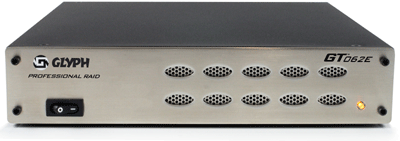 <
<
|
|
|